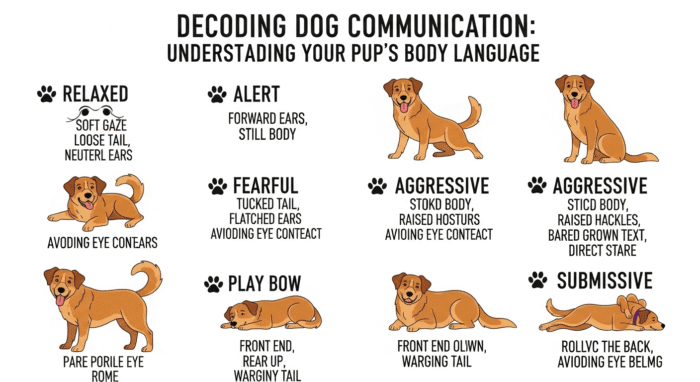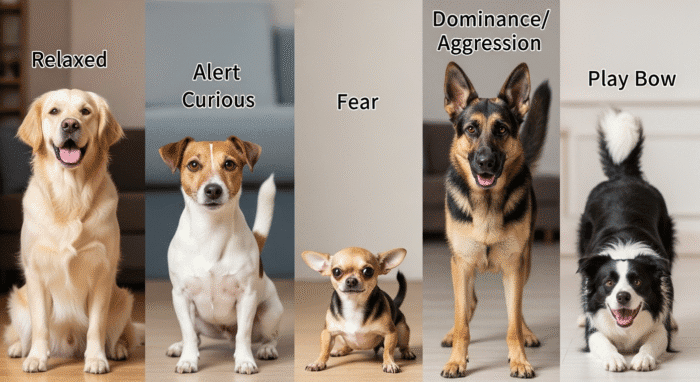Okay, let’s talk dog. Not just any dog, but your dog. Because, let’s face it, sometimes they seem like furry little enigmas, right? We feed them, we walk them, we love them… but are we really listening to them? Are we picking up on all the subtle cues they’re throwing our way? You might be surprised at how much they’re saying without uttering a single “woof.” And trust me, once you start tuning in, it’s like unlocking a whole new level of understanding.
I remember when I first started paying real attention to my old mutt, Buster. For years, I just assumed he was happy-go-lucky all the time, tail wagging, goofy grin. But then I started noticing the tiny nuances – the way his ears would flatten back when a certain neighbor walked by, the little furrow between his eyes when I raised my voice (even if I wasn’t yelling at him). Turns out, he was way more sensitive than I ever gave him credit for. It was a bit of an embarrassing realization, but it ultimately made our bond so much stronger.
Table of Contents
The Tail Tells a Tale (Sometimes)

Ah, the tail. Everyone thinks they know what a wagging tail means, right? Happy dog! End of story. But… not so fast. A wagging tail is more like a general indicator of arousal, and not necessarily a positive one. Think of it like raising your voice. You might raise your voice when you’re excited, but you also might raise your voice when you’re angry or frustrated. Same thing with a dog’s tail. You need to look at the whole picture.
The position of the tail is just as important as the wag. A tail held high and wagging stiffly? That could be a sign of dominance or even aggression. A tail tucked low between the legs? Definitely fear or submission. And a relaxed, neutral wag? That’s probably your happy, goofy dog. See, it’s a whole language unto itself! Don’t be fooled by the wag. Context is key. According to research documented on Wikipedia, dogs use a variety of tail positions and movements to communicate with each other and with humans.
Ears and Eyes: Windows to the Canine Soul
Okay, so maybe the tail is a bit more complicated than we thought. But what about those expressive ears and eyes? These are definitely worth paying attention to. Relaxed, forward-facing ears usually mean the dog is alert and curious. Ears pinned back? They’re likely feeling submissive, fearful, or even stressed. Think about it – it’s kind of like human body language, isn’t it? We slump our shoulders when we’re down, we stand tall when we’re confident.
And the eyes! Oh, the eyes have it. A soft, relaxed gaze usually means your dog is comfortable and content. But hard, direct eye contact can be a challenge, especially to another dog. Whale eye (where you can see the whites of their eyes) often indicates stress or discomfort. I’ve seen dogs give whale eye when they’re being hugged too tightly or when they’re cornered by a rambunctious kid. It’s their way of saying, “Hey, back off a little!”
Here’s the thing: all of this varies from dog to dog. Some breeds are just naturally more expressive than others. My friend’s Shiba Inu, for example, communicates almost entirely through facial expressions. It’s almost comical how much attitude she can convey with just a slight shift of her eyebrows! But even with less outwardly expressive breeds, you can still learn to read their subtle cues. It just takes practice and observation.
Vocalizations Beyond the Bark
Of course, we can’t forget about vocalizations. Barking is the most obvious one, but even that can mean a million different things. A high-pitched, excited bark? That’s usually a “play with me!” invitation. A low, guttural growl? That’s a clear warning to stay away. And then there’s the howling, the whining, the yipping… it’s a whole symphony of canine communication!
But, it’s not just the sound itself, it’s the context. A dog barking at the mailman is different than a dog barking at a squirrel in the backyard. You might even find useful information about Choosing the Right Dog Breed for your Family on our website.
I’ve got to admit, this part fascinates me. Because, you know, we tend to think of language as something uniquely human. But dogs have their own complex systems of communication, and it’s all based on instinct, experience, and learning. It’s pretty amazing when you think about it.
The Importance of Context and Individual Personality
Okay, so we’ve covered tails, ears, eyes, and vocalizations. But here’s the really crucial point: you can’t just look at one signal in isolation. You have to consider the whole context. What’s the dog’s body posture like? What’s happening in the environment? What’s the dog’s history and personality?
Think about it this way: if someone crosses their arms, does that automatically mean they’re angry? Not necessarily! They might just be cold. Same thing with dogs. A dog that’s panting might be hot, but they also might be stressed or anxious. You have to look at the whole picture to figure out what’s really going on.
But more than that, every dog is an individual. Just like people, they all have their own unique personalities and quirks. Some dogs are naturally more anxious than others. Some are more playful. Some are more reserved. You have to get to know your own dog and learn their individual communication style.
I remember when my cousin adopted a rescue dog who was terrified of umbrellas. For months, she couldn’t even open an umbrella in the house without the dog cowering in fear. Eventually, she figured out that the dog had probably been abused with an umbrella in his previous home. It took a lot of patience and gentle reassurance, but eventually, she helped him overcome his fear. The key was understanding his individual history and tailoring her approach to his specific needs. That is the point, after all.
FAQ: Decoding Dog Communication
How do I know if my dog is stressed?
Good question! There are a few key signs to look for. Yawning (when they’re not tired), lip licking, whale eye (showing the whites of their eyes), panting (when they’re not hot), and a tucked tail are all common indicators of stress. Some dogs may also start to shed excessively or become restless and unable to settle down. The tricky part is that some of these behaviors can also indicate other things, so you need to consider the context and your dog’s individual personality.
Why does my dog stare at me?
Well, that depends! Sometimes, it’s a sign of affection. They’re just gazing adoringly at their favorite human (that’s you!). Other times, they might be trying to communicate a need. Maybe they’re hungry, need to go outside, or want to play. And sometimes, they’re just waiting for you to do something interesting! The important thing is to pay attention to the rest of their body language to figure out what they’re trying to say.
Is a wagging tail always a happy tail?
Nope! This is one of the most common misconceptions about dog communication. A wagging tail simply indicates arousal. It could be excitement, happiness, but it could also be anxiety, frustration, or even aggression. You need to consider the position of the tail, the speed of the wag, and the overall body language of the dog to get a complete picture. A stiff, high wag is very different from a relaxed, low wag!
How can I improve my communication with my dog?
The best thing you can do is to simply pay attention! Observe your dog’s body language in different situations and start to learn their individual cues. Try to avoid making assumptions based on generalities. Every dog is an individual, and they all communicate in their own unique way. Also, be consistent with your own communication. Use clear, simple commands and reward them when they understand and respond correctly.
Decoding Dog Communication: Understanding Your Pup’s Body Language, in short, really just takes time, patience, and a whole lot of love. You might also find great tips on the ultimate guide to dog-friendly travel.
So, the next time you’re hanging out with your furry friend, take a moment to really observe them. Watch their ears, their eyes, their tail. Listen to their vocalizations. You might be surprised at how much they’re trying to tell you. And who knows, you might even learn a thing or two about yourself in the process. Now, if you’ll excuse me, I think I hear Buster calling my name. Probably time for a walk!

